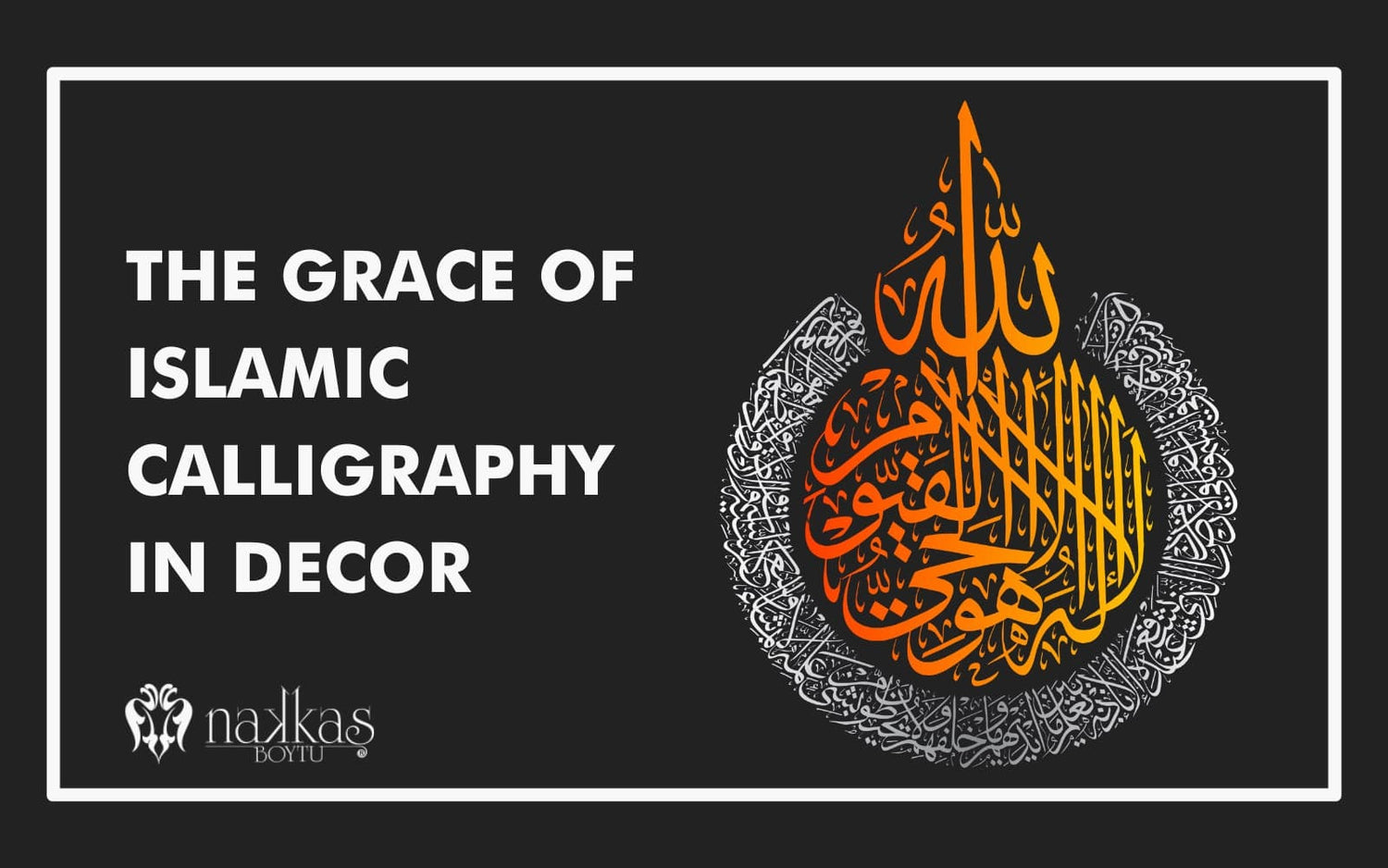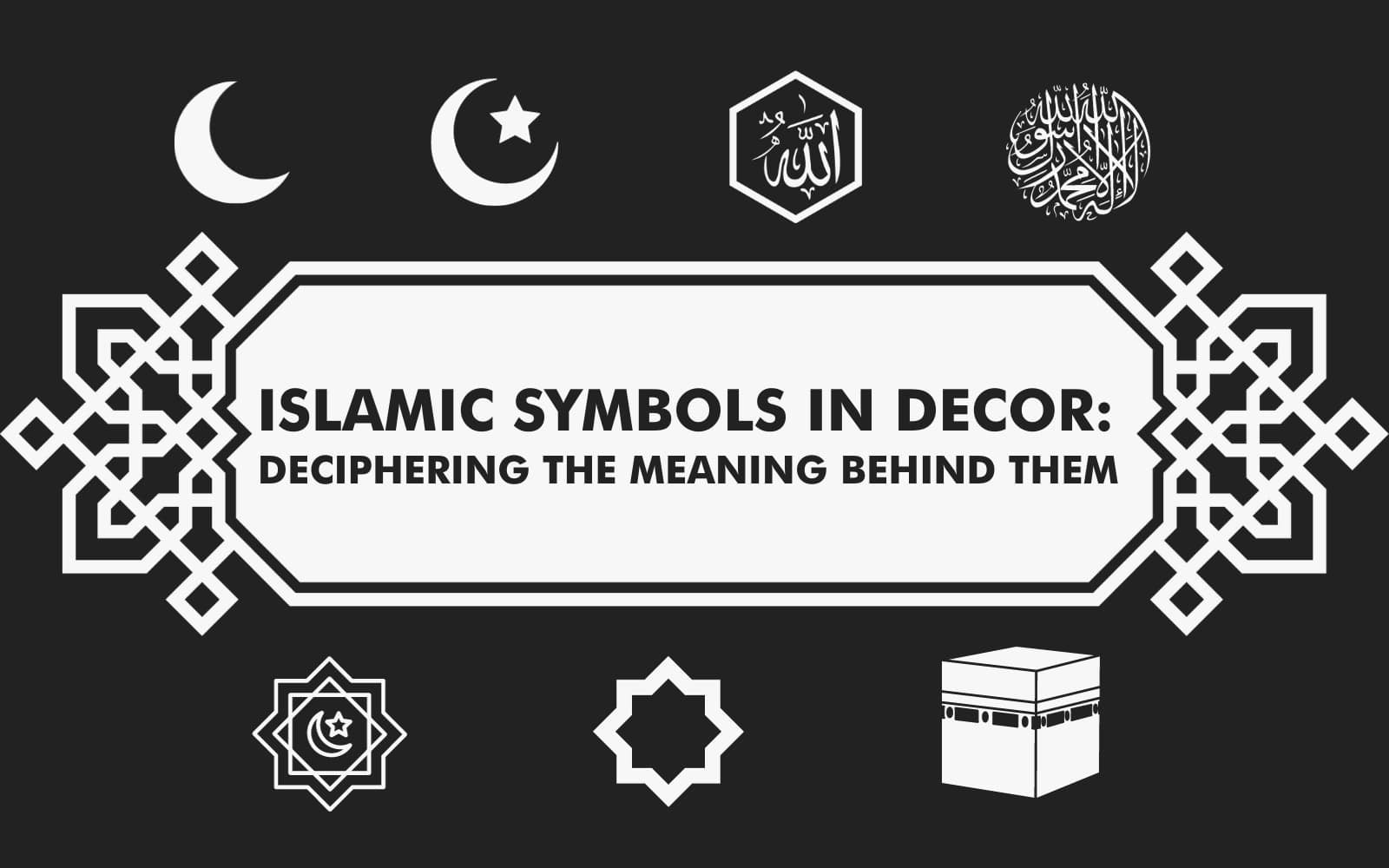Islamic calligraphy, tracing its roots back to the 5th century when the Arabic script was derived from the Nabataea script, has been a beacon of artistic and spiritual expression for over 15 centuries. This art form, deeply intertwined with the essence of Islamic culture, has evolved over the centuries, giving rise to various styles and interpretations.
In this exploration, we'll delve into the significance of calligraphy in Islamic decor, its influence on architectural designs, and the modern interpretations that blend tradition with contemporary trends. From the grand mosques to modern homes, discover how calligraphy continues to shape the world of Islamic interior design.
What is Islamic Calligraphy?
Islamic calligraphy is the artistic practice of handwriting based on the Arabic alphabet, reflecting the cultural and spiritual heritage of Islamic regions. The essence of calligraphy in Islam is its ability to convey text and spiritual meaning. Manifesting in intricate designs that grace various art forms, from grand architectural structures to delicate manuscripts.
With its origins in Arabic script, Islamic calligraphy offers a vast potential for ornamental expression. It has been used in diverse and creative ways and has produced works of immense beauty. The fact that the Holy Qur'an, the fundamental religious text of Islam, was preserved predominantly in handwriting demonstrates the important role of calligraphy in the Islamic tradition.
What are Some of the Different Types or Styles of Islamic Calligraphy?
Some of the different types or styles of Islamic Calligraphy stand out as a testament to the rich cultural and spiritual heritage. Over the centuries, this art form has evolved, giving rise to distinct styles, each reflecting a unique blend of tradition and innovation. Here are the most prominent 9 styles:
- Kufic
- Naskh
- Thuluth
- Muhaqqaq
- Diwani
- Maghrebi
- Riqa
- Nastaliq
- Sini

Why is Calligraphy Important in Islamic Art?
Calligraphy is important in Islamic Art primarily because it embodies the divine word of the Qur'an, serving as its visual representation. Islamic calligraphy art is a harmonious blend of beauty and devotion, capturing the hearts and souls of believers and art enthusiasts alike.
As images of God or prophets are traditionally avoided in Islamic art, calligraphy emerged as a means to define calligraphy and its role in Islamic culture and art. It became the primary medium to convey religious texts, ensuring that the teachings of the Qur'an were presented with the reverence they deserved. The written word, especially when it pertains to divine scriptures, is treated with utmost respect and is often adorned with intricate designs and patterns.
How is Islamic Calligraphy Used in Islamic Decor?
Islamic Calligraphy used in Islamic Decor adds spiritual meaning and aesthetic appeal to spaces. Deeply rooted in Islamic tradition, this art form reflects the divine essence of the Quran, transforming monumental and personal spaces.
In many grand mosques and architectural structures, craftsmen inscribe verses from the Quran on walls, ceilings, and arches. Beyond these grand structures, Islamic calligraphy also adorns everyday objects. Ceramics, textiles, and furniture often feature calligraphic motifs, seamlessly blending art with everyday life.
Can Islamic Calligraphy Add Decorative Charm to Home Decor?
Islamic calligraphy in decor can enhance the aesthetic appeal of home interiors. Drawing from a rich tradition of artistic expression, Islamic calligraphy seamlessly blends spirituality with beauty. Wall art, textiles, or ceramics can combine the intricate designs of Islamic calligraphy with cultural richness and artistic finesse.
How has Islamic Calligraphy Influenced Islamic Architecture and Design?
Islamic Calligraphy influenced Islamic architecture and design as a cornerstone for many iconic structures and artistic creations. The intricate patterns and Islamic Arabic calligraphy art lend a spiritual flavor to the fabric of buildings and designs. From the majestic domes of mosques adorned with Quranic verses to the tiles in palaces, calligraphy enhances aesthetic appeal while imparting deep spiritual meaning.
How are Modern Interpretations Utilizing Islamic Calligraphy in Decor?
Modern Interpretations utilizing Islamic calligraphy in decor brings the timeless beauty of traditional scripts into today's homes and spaces. Designers use calligraphy in Islamic art to add elegance to wall art, furniture, and textiles. By integrating these classic scripts with modern design elements, they create pieces that connect heritage with current trends, making Islamic calligraphy a versatile and cherished element in contemporary decor.
What are the Most Popular Styles of Islamic Calligraphy?
The most popular style of Islamic calligraphy is not limited to just one but encompasses a range of styles, each with its unique charm and historical significance. Among these, Kufic stands out with its geometric precision, while Naskh captivates with its fluid elegance. Thuluth, with its grandeur, often graces monumental inscriptions, and Diwani, born in the Ottoman courts, showcases intricate curves. Each style, with its distinct characteristics, contributes to the rich tapestry of Islamic calligraphy.
How Do Islamic Geometric Patterns Complement Calligraphy in Decor?
Islamic geometric patterns complement calligraphy in decor by intertwining the spiritual messages of calligraphy with the visual rhythm of geometric designs. Together, they create a balanced composition that enriches the ambiance and aesthetic of any space. Whether in mosques, homes, or intricate artworks, this fusion of script and shapes captures the heart of Islamic art, symbolizing unity through geometric patterns.
What Role Do Islamic Symbols Play in Enhancing Home Ambiance?
Islamic symbols enhance home ambiance by weaving spirituality, history, and cultural identity into spaces. From the intricate calligraphy of Quranic verses to captivating geometric designs, these elements infuse home decor with profound meaning and elegance. They not only beautify interiors but also cultivate a sense of peace, creating an atmosphere rooted in the rich tradition of Islamic symbols.
What Makes Islamic Decor Unique in the World of Interior Design?
What makes Islamic decor unique in the world of interior design is its profound connection to spirituality, history, and art. Intricate calligraphy, captivating geometric patterns, and symbolic motifs come together to create spaces that resonate both visually and spiritually. More than just enhancing beauty, this decor narrates a story of faith, culture, and age-old traditions. The thoughtful fusion of form and function in Islamic decor offers a timeless appeal, aligning beautifully with contemporary home decor trends.
How Does Islamic Calligraphy Wall Art Enhance Home Decor?
Islamic Calligraphy wall art enhances home decor by adding spiritual depth and artistic elegance to living spaces. The flowing script, often depicting Quranic verses or poetic phrases, is a visual reminder of faith and heritage. Beyond its spiritual significance, this wall art acts as a focal point, bringing a sense of harmony and sophistication to interiors.
Inspired by the rich tradition of Islamic calligraphy and its profound influence on decor, Nakkaş Boytu has been on a journey since 1997, blending tradition with innovation. Drawing from the essence of tradition to the future, they have breathed life into centuries-old scripts, giving them a three-dimensional touch. Experience the fusion of heritage and modernity with Nakkaş Boytu's unique creations. Dive into this ocean of artistic brilliance and discover a treasure trove of designs that resonate with the soul of Islamic art.





